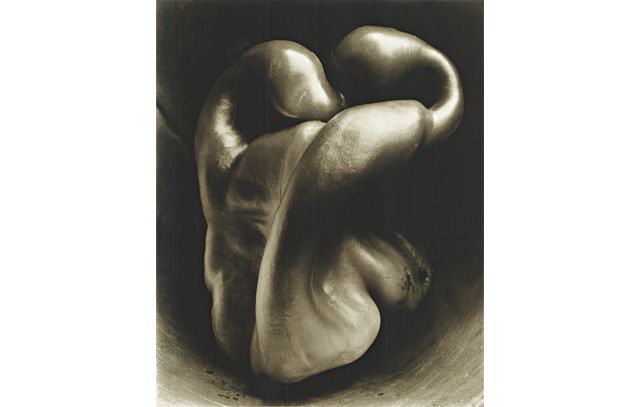Weston's Peppers
Among pioneers of photography, few have attained the stature of Edward Weston. Born in 1886 near Chicago, Weston turned to photography early in life and spent four decades pushing the boundaries of this medium making some magnificent and iconic images along the way.
Photography went through some profound changes during Weston's lifetime. During the late 1800s and early 1900s, many photographers pursued pictorialism with the goal of creating images that imitated the content and spirit of paintings. They made fuzzy images with soft focus as well as dramatic poses, costumes and lighting, and sometimes used darkroom effects to achieve their result.
But the tide turned, and in 1931, a group of photographers including Weston rebelled against pictorialism and announced formation of the “Group f/64.” The goal was to create images true to the capabilities of the camera and nature of the photographic image: highly-detailed, sharp, clear photographs of subjects as they appeared in reality. The f/64 group also wanted to concentrate on subject matter that was available every day and everywhere instead of the made-up and artificial scenes of pictorialism.
The precise and modernist aesthetics they ushered in – “straight” photography - has dominated the medium of photography and many of its uses to this day.
As part of working with this philosophy, Weston created photographs of all kinds, including still lives, nudes, landscapes and portraits. One of his most famous works is a series of photographs of bell peppers (capsicums) he made using his large view camera that yielded negatives of exceptional detail and clarity. In his diary Weston wrote that his mission was to capture the essence of the “thing itself” with his photographs, and perhaps nowhere is this thought more clearly and intensely seen and felt than in his pepper photographs, which in the eyes of many were the culmination of his photographic vision.
When I started out in photography, I read Weston's diaries (“The Daybooks of Edward Weston.”) They were a forceful and inspiring reading into the struggles an artist undergoes to attain his true vision.
Weston's peppers have been seen, admired and discussed so much that they have become clichés, like many of Shakeaspeare's quotations, or songs we have heard repeatedly since childhood.
Some years ago, I read an interview with a photographer whose name I have forgotten but whose subject matter I remember. She was spending a lot of time photographing bell peppers. The interviewer asked her why, since Weston had already photographed peppers so well. She replied that even though Weston's peppers were masterpieces, she felt that “Weston does not own peppers.”
Indeed, this kind of thinking is fundamental in creative work. It is normal to feel intimidated when trying to stand on the shoulders of giants. But just because a great artist has tackled a subject successfully does not mean it is out of bounds.
So, if I find myself becoming interested in a subject that has been photographed a million times, seen in every possible light and every possible angle, I never shy away. Instead, I say to myself, “Weston does not own peppers” and charge ahead!
www.facebook.com/tangents.ikabir


 For all latest news, follow The Daily Star's Google News channel.
For all latest news, follow The Daily Star's Google News channel. 



Comments